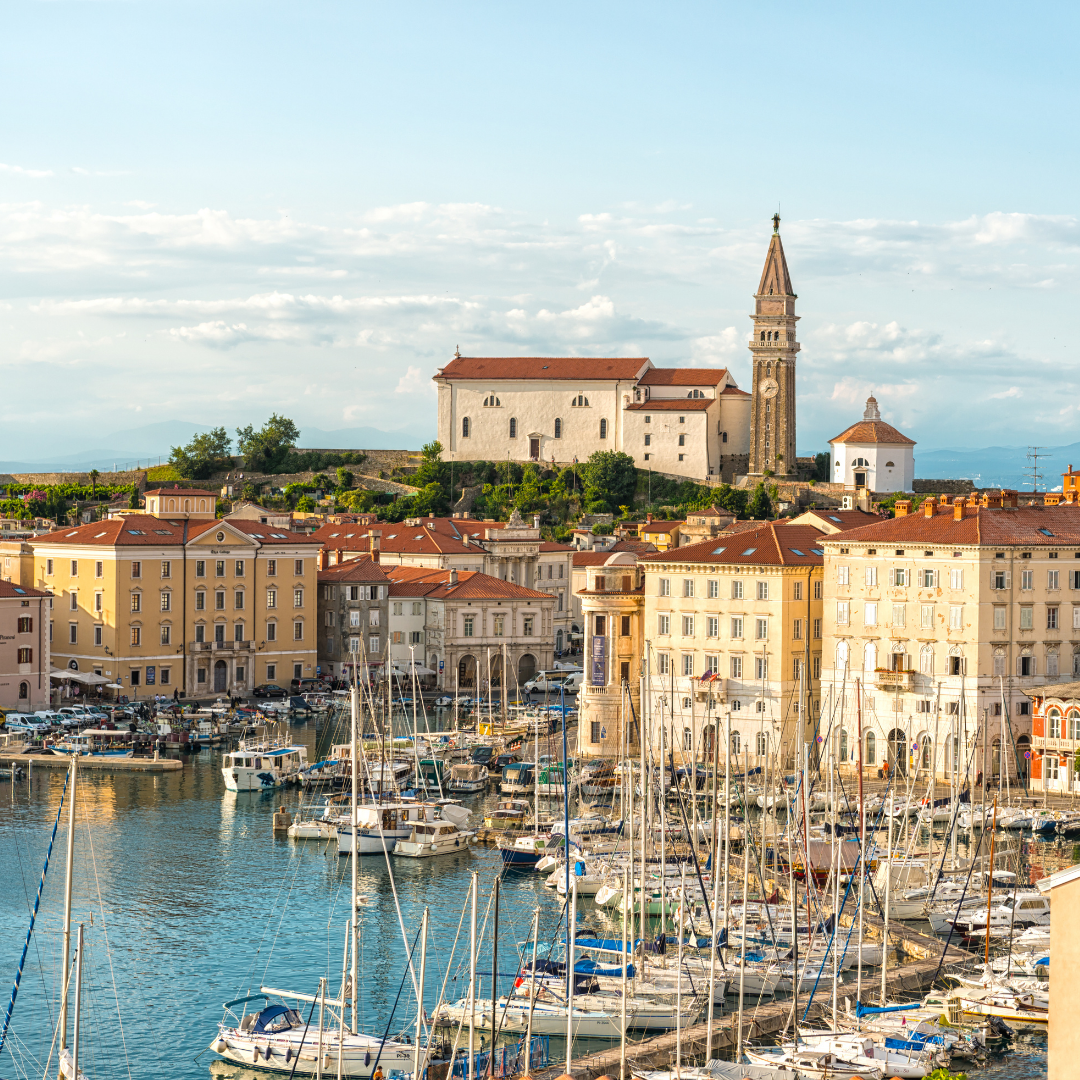Piran and the Slovenian Coast: Sailing the Adriatic Sea

Slovenia, a hidden gem in Central Europe, possesses a brief yet captivating stretch of Adriatic coastline. Among the pearls scattered along this coast, the town of Piran emerges as a shining jewel. Its Venetian architecture, combined with the charm of nearby towns and the allure of the Adriatic, makes sailing the Slovenian coast an experience of unparalleled beauty. As the sea whispers tales of ancient mariners, this guide will navigate you through the wonders that await.
The Architectural Beauty of Piran: A Venetian Legacy
The narrow, winding streets of Piran open up to reveal a treasure trove of Venetian Gothic architecture. A testament to its historic ties with the Venetian Republic, the town seems to have captured time in its cobbled pathways and terracotta-roofed buildings. The focal point, Tartini Square, is named after the famous violinist Giuseppe Tartini and showcases a blend of architectural styles, from Venetian to Austrian.
Piran’s St. George’s Cathedral, perched on a hill, offers panoramic views of the town and the azure Adriatic waters. The town walls, constructed to guard against Ottoman invasions, now provide a historical backdrop to this Adriatic gem. Every brick and stone in Piran whispers tales of centuries past, making it a living museum by the sea.
Anchorage Points and Marinas along Slovenia’s Coast
Though Slovenia’s coastline is a mere 47 kilometers long, it boasts several anchorage points and marinas for sailors. The Marina Portorož is the most prominent, offering modern facilities, repair services, and provisions. Additionally, it’s an entry and exit point for international sailors.
Other smaller marinas and anchorages dot the coast, such as the Koper Marina and the Izola Marina. These provide essential services, though on a smaller scale. While berthing spaces are generally available, pre-booking during the peak season is advisable. These marinas act as gateways to explore the quaint coastal towns and the Adriatic’s crystal-clear waters.
Nearby Coastal Towns: Izola and Koper
Beyond Piran, the Slovenian coast is adorned with towns like Izola and Koper, each carrying its unique charm. Izola, once an island, is now a peninsula connected to the mainland. Its history as a fishing town is evident in its bustling fish markets and seafood restaurants. The old town, with its narrow streets and Venetian houses, beckons exploration.
Koper, Slovenia’s largest coastal town, presents a mix of modernity and history. Its medieval old town square, surrounded by Venetian-influenced architecture, is a hub of cultural activities. The Praetorian Palace and Koper Cathedral are must-visit sites.
Sun, Sea, and Slovenian Beaches
Slovenia’s coastline, though short, offers a variety of beaches – from pebbly stretches to sandy shores. Piran’s main beach is a concrete affair but provides sunbeds, umbrellas, and easy access to the sea. For a more natural setting, Strunjan offers pristine beaches surrounded by cliffs, while Portorož boasts sandy expanses perfect for sunbathing.
The waters of the Adriatic here are calm and clear, making them ideal for swimming, snorkeling, and diving. Several beach clubs and bars dot the coast, ensuring that refreshments are never far away.
The Salt Pans of Secovlje: A Unique Coastal Attraction
The Secovlje Salina Nature Park is not just a testament to Slovenia’s salt production history but also a haven for birdwatchers. Spanning over 650 hectares, these salt pans produce the renowned Piran salt using traditional methods. The museum on site showcases the salt production process, and visitors can even try their hand at harvesting salt.
Apart from its economic significance, the area is a vital stopover for migratory birds. Flamingos, herons, and avocets are common sights, making this an essential visit for nature enthusiasts.
Adriatic Seafood: Fresh from the Ocean
The Adriatic blesses Slovenia with a bounty of seafood. From the traditional fish markets of Izola to upscale restaurants in Portorož, the freshness of the catch is unparalleled. Popular dishes include the Adriatic squid, grilled sardines, and mussels in white wine sauce. Pair these with a glass of local Malvazija wine for a culinary experience that tantalizes the palate.
Best Times and Seasons to Sail the Slovenian Adriatic
The best time to sail the Slovenian Adriatic is between May and September. The weather is warm, and the sea conditions are ideal. July and August are peak months, attracting tourists from around the world. For those seeking tranquility, late May to early June or September offer calmer seas and fewer crowds. While the winters are mild, they’re accompanied by the Bora wind, making sailing challenging for inexperienced mariners. Always check weather forecasts and be prepared for sudden weather shifts characteristic of coastal regions.
The Slovenian coast, with its blend of history, natural beauty, and maritime allure, is a voyage through time and nature. As the sails catch the Adriatic breeze and the horizon reveals the terracotta roofs of Piran, one realizes that this journey is not just about destinations but also the stories, flavors, and memories that intertwine along the way. In the embrace of the Adriatic, Slovenia offers a coastal experience that remains etched in the heart, long after the journey ends.


